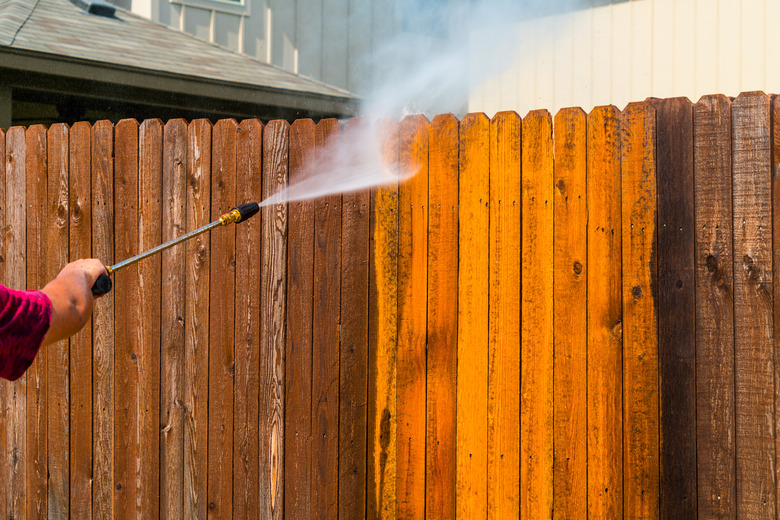Can An Old Wood Fence Be Restored?
A newly installed wood fence boosts your home's curb appeal, but the weather elements gradually leave your fence looking worn. When it comes to fencing material, wood requires routine maintenance to help prevent damage. You can restore the wood fence if it's seen better days as long as it's still somewhat structurally sound.
Pressure Wash the Wood Fence
Pressure washing the wood removes grime and dirt as it makes the wood grain rough and slightly raised. This makes it easier for new finish or sealant to absorb into the wood, so it sticks better.
When using a pressure washer on a wood fence, you can easily gouge the wood if you don't use the machine properly. Avoid pressure above 3,000 psi; between 1,500 and 2,000 psi is ideal. Protect plants from the powerful water stream and consider what's on the other side, as the water will likely go through.
Start with a 25-degree sprayer tip to get used to the machine. You can move to a 15-degree sprayer tip, which cleans more aggressively. Keep the wand moving constantly. You'll notice the wood fence turns a brighter color as you pressure wash it. Stop pressure washing when you don't see the color changing anymore to avoid taking off too much wood.
Tighten Loose Fence Parts
If your fence is a little wobbly, tighten the screws that hold it together. You might also need to drive the fence nails back into the wood if they've popped out. You can add new corrosion-resistant screws to tighten and secure boards.
Fix Loose Fence Posts
Sturdy fence posts are essential for keeping the entire fence stable and strong, so you'll need to address loose or wobbly fence posts. Determine why the post is wobbly. In some cases, the base of the post rots, so the entire fence post needs to be replaced. Sometimes, the fence post wasn't set properly initially or the soil around it has washed away.
If your fence post is still in good condition, you can often backfill the hole to stabilize it. Backfilling is more effective if you use dirt without rocks or clumps, as they can keep dirt from going to the bottom of the hole. Add a few inches of soil, pack it down with a slim piece of wood, and repeat until the post is securely backfilled.
You can also dig some soil out from around the post so you can secure it with cement. Add gravel to the hole to stabilize the post. Then add prepared quick-set cement over the gravel.
Replace Damaged Fence Boards
Replacing damaged fence boards can extend the life of the fence, especially if you only need to replace a few boards. If more than a fourth of the boards are damaged or rotten, it might be worth replacing the entire fence instead of just the boards.
To replace the boards, you'll need to remove the old boards and cut replacement boards to the correct length. Attach them with corrosion-resistant screws. Your new boards will look different from the older ones, but staining or painting the fence helps them blend in.
Refinish the Wood Fence
A final part of the wood fence restoration process is refinishing or sealing the wood. This makes the fence look better and helps protect it from future damage. Consider the wood stain and sealer options and determine which one best fits your situation.
Clear sealant adds a layer of protection but doesn't change the look of the wood, so it's ideal if you're happy with the wood's current appearance. Outdoor stain and sealer products let the wood grain show, but they add some color to the wood, which can make it look more consistent if some boards are new. You can also paint your fence if you don't want a wood look. The paint protects the wood, but you'll have to repaint when it starts to peel or chip.
